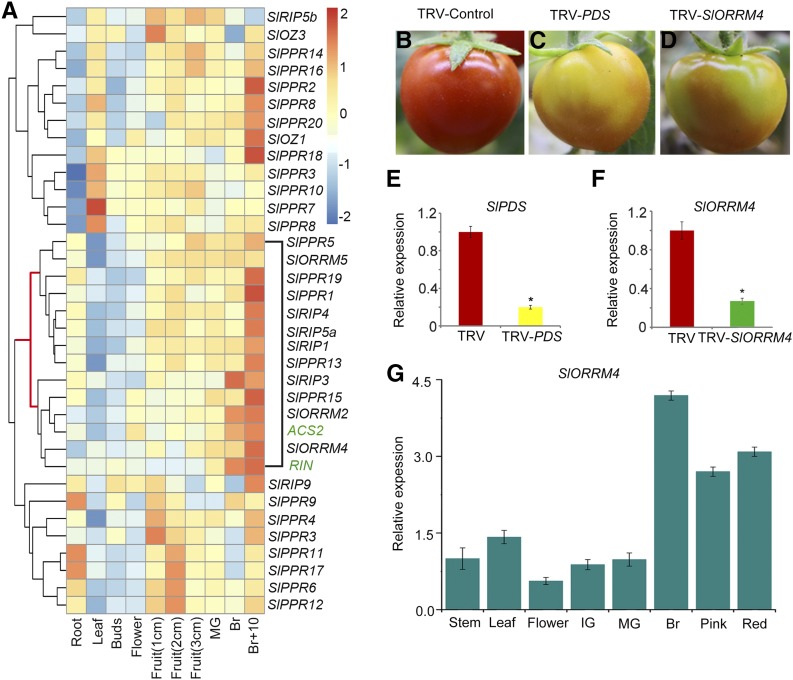Figure 1.
Silencing of the ripening-related protein SlORRM4 affects tomato fruit ripening. A, Expression analysis of 33 RNA editing factors across different tomato organs and fruit ripening stages. Internal control genes for fruit ripening are ACS2 and RIN. Each column represents a tomato organ. Three-week sand-grown seedlings were harvested for roots and leaves. Plants were harvested for unopened flower buds (Buds) and fully open flowers (Flowers). Additional flowers were allowed to self-pollinate. The bar on the right represents normalized expression data from high to low (blue to red). Species names are abbreviated as follows: At, Arabidopsis; Sl, tomato. B to D, Tomato infiltrated with vectors TRV-control, TRV-PDS, and TRV-SlORRM4, respectively. E, qRT-PCR analysis of PDS transcripts in TRV-control (red sections) and TRV-PDS (yellow sections) tomato fruits. The internal reference was Actin. Values are means ± sd of three independent replicates. The asterisk indicates P < 0.05 (Student’s t test). F, qRT-PCR analysis of SlORRM4 transcripts in TRV-control (red sections) and TRV-SlORRM4 (yellow sections) tomato fruits. The internal reference was Actin. Values are means ± sd of three independent replicates. The asterisk indicates P < 0.05 (Student’s t test). G, SlORRM4 expression in vegetative and reproductive tomato organs, analyzed with qRT-PCR. Actin was the internal control. Values are means ± sd of three independent replicates. IG, Immature green.

